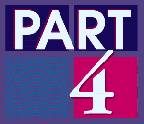

By by Maggie Stenz
1. While Glackens painted the square as early as 1906 (William H. Gerdts, William Glackens [New York: Abbeville Press, 1996], 101-02) and as late as 1919, most of his Washington Square works were executed during the middle years of this span, and these are the most crucial to my discussion. There are at least twenty-five recorded paintings in the series, though many are presently unlocated. 2. For a summary of the square’s demographics circa 1900, see Mindy Cantor, “Washington Arch and the Changing Neighborhood,” in Rick Beard and Leslie Cohen Berlowitz, eds., Greenwich Village: Culture and Counterculture (New Brunswick, N.J.: Rutgers University Press, 1993), 83-92. 3. Marianne Griswold Van Rensselaer, “Picturesque New York,” Century 45 (December 1892): 172. 4. Glackens’s park-goers are mainly women, who had the park to themselves during weekdays when the men of the neighborhood were at work. As Ruth Carol Berkin has shown (“Washington Square: A Woman’s World,Ó in Rick Beard and Leslie Cohen Berlowitz, eds., Greenwich Village: Culture and Counterculture [New Brunswick, N.J.: Rutgers University Press, 1993], 134-41), these women themselves constituted three separate spheres: mistresses of the wealthy households on the square; the nursemaids, cooks, music teachers, seamstresses, and chambermaids that served them; and the immigrant factory girls who were only seen on their way to and from work in the nearby factories. Glackens’s pictures register these class and occupational differences, and also include a number of immigrant mothers with babies as well as children unaccompanied by adults. 5. On the city’s street cleaners, see William H. Gerdts, Impressionist New York (New York: Abbeville Press, 1994), 69. 6. In 1910, for example, Manhattan’s one million immigrants represented nearly half of the island’s total population. Italians accounted for over one-third of that number; Kenneth T. Jackson, The Encyclopedia of New York City (New Haven: Yale University Press and New York: New-York Historical Society, 1995), 582, 584-85. 7. “Big Crowd Cheers Columbus Paraders,” New York Times, October 13, 1909, 7; “Columbus Day Marchers,” Evening Post, October 12, 1911, 2. 8. Andrew F. Rolle, The Italian-Americans: Their History and Culture (Belmont, CA: Wadsworth Publications, 1972), 59-60. 9. Glackens’s paintings are more optimistic in this respect than were many Americans, if we can judge from newspaper reports of the parade. While newspapers often listed the Italian societies and Italian-American community leaders present at the parade and at the gala post-parade dinners, speeches by city and state officials often betrayed popular beliefs that Italians and other southern European immigrants were more suited to jobs as manual laborers than as full-fledged citizens active in all areas of society; see, for instance, “Columbus Abused, Too, Mayor Says,” New York Times, October 13, 1911, 3. 10. David Glassberg, American Historical Pageantry: The Uses of Tradition in the Early Twentieth Century (Chapel Hill: University of North Carolina Press, 1990) cites numerous instances where upperclass, Anglo-Saxon community leaders and pageant organizers betray their class and race biases despite their good intentions to be democratic and inclusive. 11. Sloan recalled, “These religious festivals in the Italian quarters of New York were and still are colorful invasions of very drab localities. Wooden squared arches span the streets draped with bright bunting and electric lights festooned overhead”; John Sloan, Gist of Art (New York: American Artists Group, 1939), 239. This work is atypical of Sloan’s pictures, which are noted by many scholars for their open-ended narratives and for their lack of stereotypes or obvious identification with specific ethnic groups.